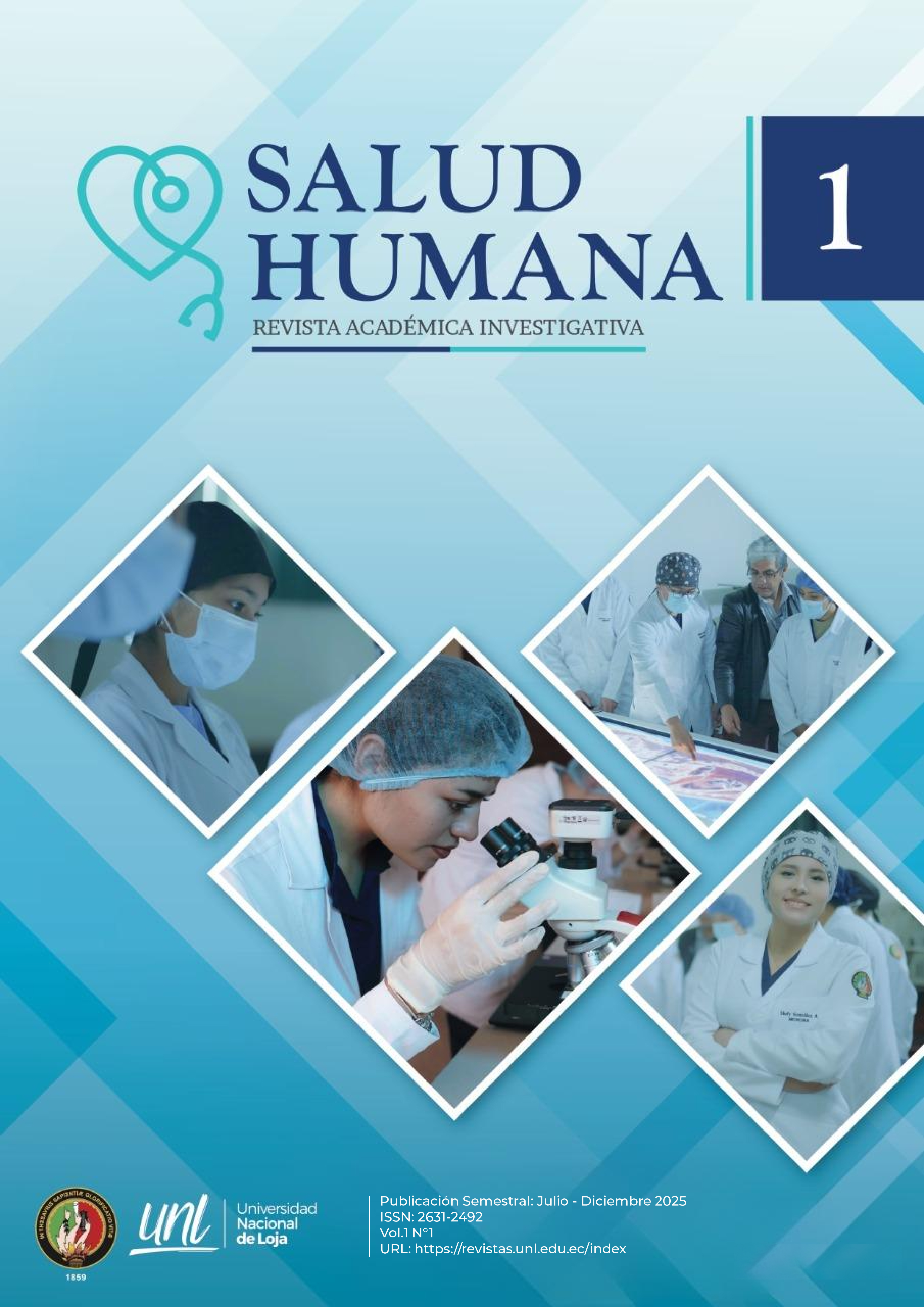Bilateral submaxillectomy secondary to lithiasic sialadenitis in a young adult male
DOI:
https://doi.org/10.54753/rsh.v1i1.2423Keywords:
Submandibular gland excision, submaxillectomy, sialolithiasis, sialadenitisAbstract
The main indication for submandibular gland excision includes salivary lithiasis with secondary ductal obstruction and recurrent sialadenitis, as well as benign neoplasms and refractory sialorrhea. Complications reported with this procedure include temporary or permanent paralysis of the hypoglossal nerve and the marginal branch of the facial nerve, orocutaneous fistula, and hematoma formation. The present case reports a 32-year-old male patient who underwent bilateral submaxillectomy in two surgical stages with a one-year interval between procedures. Mild transient complications were observed with no recurrence up to 2 years post-surgery, demonstrating the safety of this procedure using a transcervical submandibular approach.References
[1] Adhikari, R., & Soni, A. (2022). Submandibular Sialadenitis and Sialadenosis. StatPearls. https://www.ncbi.nlm.nih.gov/books/NBK562211/
[2] Bannister, M., Thompson, C. S. G., & Conn, B. (2018). Case Report: Bilateral submandibular gland nodular oncocytic hyperplasia with papillary cystadenoma-like areas. BMJ Case Reports, 2018. https://doi.org/10.1136/BCR-2018-226145
[3] Bernabe, E., Marcenes, W., Hernandez, C. R., Bailey, J., Abreu, L. G., Alipour, V., Amini, S., Arabloo, J., Arefi, Z., Arora, A., Ayanore, M. A., Bärnighausen, T. W., Bijani, A., Cho, D. Y., Chu, D. T., Crowe, C. S., Demoz, G. T., Demsie, D. G., Forooshani, Z. S. D., … Kassebaum, N. J. (2020). Global, Regional, and National Levels and Trends in Burden of Oral Conditions from 1990 to 2017: A Systematic Analysis for the Global Burden of Disease 2017 Study. Journal of Dental Research, 99(4), 362–373. https://doi.org/10.1177/0022034520908533
[4] Cammaroto, G., Vicini, C., Montevecchi, F., Bonsembiante, A., Meccariello, G., Bresciani, L., Pelucchi, S., & Capaccio, P. (2020). Submandibular gland excision: From external surgery to robotic intraoral and extraoral approaches. Oral Diseases, 26(5), 853–857. https://doi.org/10.1111/ODI.13340
[5] Chaukar, D. A., Deshmukh, A. D., Majeed, T., Chaturvedi, P., Pai, P., & D’cruz, A. K. (2013). Factors affecting wound complications in head and neck surgery: A prospective study. Indian Journal of Medical and Paediatric Oncology : Official Journal of Indian Society of Medical & Paediatric Oncology, 34(4), 247–251. https://doi.org/10.4103/0971-5851.125236
[6] Cumpston, E., & Chen, P. (2023). Submandibular Excision. StatPearls. https://www.ncbi.nlm.nih.gov/books/NBK568740/
[7] De Brito Neves, C. P., Lira, R. B., Chulam, T. C., & Kowalski, L. P. (2020). Retroauricular endoscope-assisted versus conventional submandibular gland excision for benign and malignant tumors. Surgical Endoscopy, 34(1), 39–46. https://doi.org/10.1007/S00464-019-07173-3
[8] Erbek, S. S., Koycu, A., Topal, O., Erbek, H. S., & Ozluoglu, L. N. (2016). Submandibular Gland Surgery: Our Clinical Experience. Turkish Archives of Otorhinolaryngology, 54(1), 16–20. https://doi.org/10.5152/TAO.2016.1467
[9] Holden, A. M., Man, C. B., Samani, M., Hills, A. J., & McGurk, M. (2019). Audit of minimally-invasive surgery for submandibular sialolithiasis. British Journal of Oral and Maxillofacial Surgery, 57(6), 582–586. https://doi.org/10.1016/j.bjoms.2019.05.010
[10] Jaguar, G. C., Lima, E. N. P., Kowalski, L. P., Pellizon, A. C., Carvalho, A. L., & Alves, F. A. (2010). Impact of submandibular gland excision on salivary gland function in head and neck cancer patients. Oral Oncology, 46(5), 349–354. https://doi.org/10.1016/J.ORALONCOLOGY.2009.11.018
[11] Khalaf, M. G., Nassereddine, H., Chahine, G., & Melkane, A. E. (2021). An unusual metastatic submandibular gland tumor. European Annals of Otorhinolaryngology, Head and Neck Diseases, 138(5), 411–412. https://doi.org/10.1016/J.ANORL.2020.09.011
[12] Righini, C.-A., Gil, H., Colombé, C., & Fabre, C. (2024). Tumores de la glándula submandibular del adulto. EMC - Otorrinolaringología, 53(2), 1–11. https://doi.org/10.1016/S1632-3475(24)49029-2
[13] Sigismund, P. E., Zenk, J., Koch, M., Schapher, M., Rudes, M., & Iro, H. (2015). Nearly 3,000 salivary stones: Some clinical and epidemiologic aspects. Laryngoscope, 125(8), 1879–1882. https://doi.org/10.1002/LARY.25377,
[14] Vergez, S., Isquierdo, J., Vairel, B., Chabrillac, E., De Bonnecaze, G., & Astudillo, L. (2023). Patología médica de las glándulas salivales. EMC - Otorrinolaringología, 52(1), 1–20. https://doi.org/10.1016/S1632-3475(22)47321-8
[15] Wolf, G., Langer, C., & Wittekindt, C. (2019). [Sialolithiasis: Current Diagnostics and Therapy]. Laryngo- Rhino- Otologie, 98(11), 815–823. https://doi.org/10.1055/A-0896-9572




